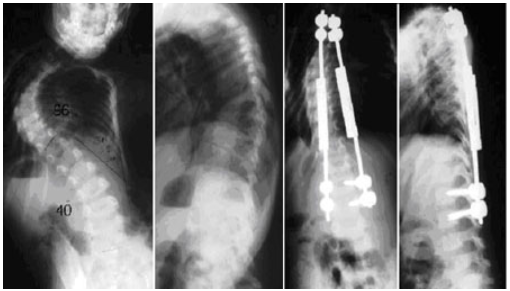Early Onset Scoliosis
Early Onset Scoliosis
Early onset idiopathic scoliosis includes infantile and juvenile idiopathic scoliosis subtypes. This includes patients up to ten years of age. The infantile category includes patients from birth to age three. Patients who present with idiopathic scoliosis at such a young age present a special set of circumferences. These patients have a large amount of growth potential and thus their curvatures are at risk for marked progression.
A majority of patients who present under age three will have curvatures that will spontaneously improve and even disappear over the course of months or years. Rarely, these patients will require a brace or surgery. For patients with juvenile idiopathic scoliosis (between ages 3 and 10) many of these patients will have highly progressive curvatures requiring bracing and often surgery. The key to success in the treatment of these conditions is early aggressive treatment with bracing in order to control curves and to maximize the patient’s growth. Often surgery is required, but this is delayed for as long as possible.
There are cases in which curve progression is so great and the deformity is so severe, that surgery cannot be delayed. In patients under eight years of age, a growth rod procedure can be done in which spinal growth is preserved, but implants are placed in the spine and correction of the deformity is done without a fusion procedure. At six months intervals, the surgeon is able to bring the patient back to the operating room and a further correction of the spine is done to allow for the spine to increase in length, thus allowing growth of the spine. Following several years of these “growth” procedures, a definitive, final spinal fusion is performed. This approach allows the trunk to grow, minimizes spinal deformity, and most importantly allows lung development to occur to preserve a normal life span for the patient.
Case Example

This two and a half year old girl was treated with a “growth rod” procedure for severe infantile idiopathic scoliosis. The 96° curvature was corrected to 30° after the first correction and she gained 4 inches in height.
